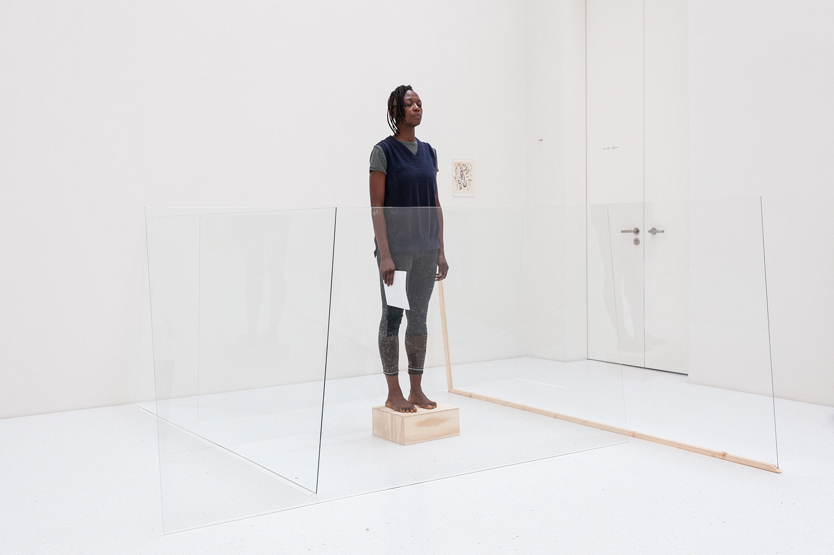Housing the Museumlandschaft Hessen-Kassel’s collection of nineteenth, twentieth, and twenty-first century art, the Neue Galerie has been an important venue in a number of previous editions of documenta. Nevertheless, documenta 14 is the first to inhabit the building in its entirety—which is fitting, perhaps, for an exhibition so self-conscious of its history, and of the broader historical forces that made the very documenta project possible. The museum’s realization in 1877 coincided with the heady early days of the German empire. Its phalanx of eight marble Länderfiguren in particular—allegorical female figures representing the eight traditional “nations of art”: ancient Greece, ancient Rome, Italy, France, Germany, Spain, the Netherlands, and England—speaks to the entanglement of nationhood, institution building, and cultural politics in this triumphant moment so soon after modern Germany’s emergence from the Franco-Prussian War.
Questions of nationhood and belonging, but also of dispersal and loss, weave a loose meshwork throughout the Neue Galerie, which effectively operates as the site of documenta 14’s memory, the primary seat of its historical consciousness. This is where the legacy of Arnold Bode, documenta’s founder in 1955, is invoked and debated—as a local avant-garde artist in dialogue with companions from his prewar years on the one hand, in the context of the Marshall Plan–financed recovery of postwar Germany on the other. And this is where that legacy is juxtaposed with geopolitical events such as the Bandung Conference of 1955, and key documents of empire, such as the infamous Code Noir, defining the legal conditions of slavery and exercise of religion in the French colonial empire, issued under Louis XIV in 1685. A quintessential postwar project, documenta reflects here on the long shadow cast by European colonialism, reaching its peak in the singular experience of World War II. Through the prism of the tangled, thorny story of the Gurlitt estate—the “affair” surrounding the private art collection of what was once one of Nazi Germany’s leading art dealers, discovered only in 2012—a larger history of concealment and manipulation of historical memory is addressed. Positing this story as one of the Neue Galerie’s primary organizing principles recasts the question of art’s relationship to the trauma of war or of art produced under conditions of totalitarian control; the museum’s relationship to the history of colonial conquest; the question of looting, ownership, and dispossession; and the all-consuming challenge of art’s entanglement in the realm of economy.

